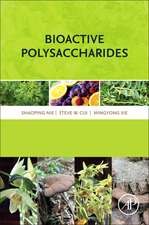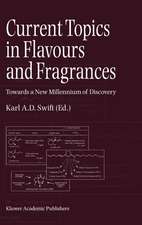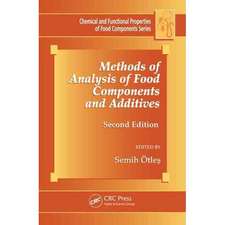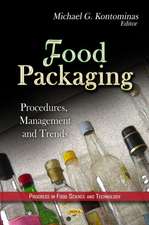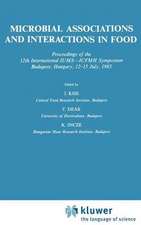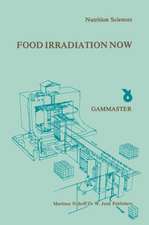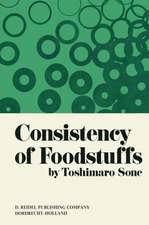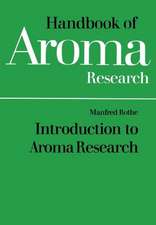Texture Measurement of Foods: Psychophysical Fundamentals; Sensory, Mechanical, and Chemical Procedures, and their interrelationships
Editat de A. Kramer, A.S. Szczesniaken Limba Engleză Paperback – 12 oct 2011
Preț: 382.18 lei
Nou
Puncte Express: 573
Preț estimativ în valută:
73.13€ • 76.56$ • 60.51£
73.13€ • 76.56$ • 60.51£
Carte tipărită la comandă
Livrare economică 05-19 aprilie
Preluare comenzi: 021 569.72.76
Specificații
ISBN-13: 9789401025645
ISBN-10: 9401025649
Pagini: 192
Ilustrații: XIII, 175 p.
Dimensiuni: 160 x 240 x 10 mm
Greutate: 0.28 kg
Ediția:Softcover reprint of the original 1st ed. 1973
Editura: SPRINGER NETHERLANDS
Colecția Springer
Locul publicării:Dordrecht, Netherlands
ISBN-10: 9401025649
Pagini: 192
Ilustrații: XIII, 175 p.
Dimensiuni: 160 x 240 x 10 mm
Greutate: 0.28 kg
Ediția:Softcover reprint of the original 1st ed. 1973
Editura: SPRINGER NETHERLANDS
Colecția Springer
Locul publicării:Dordrecht, Netherlands
Public țintă
ResearchCuprins
I / Food Texture — Definition, Measurement and Relation to Other Food Quality Attributes.- 1. Introduction.- 2. Classification.- 3. Definition.- 4. Measurement.- II / Physiological Aspects of Texture Perception, Including Mastication.- 1. Introduction.- 2. Physiological Basis of Mastication.- 3. Psychological Implications.- III / Sensory Assessment of Textural Attributes of Foods.- 1. Introduction.- 2. Terminology Surveys.- 3. Consumer Methods of Nonoral Texture Evaluation.- 4. Sensory Panel Tests.- 5. Preference/Acceptance Tests.- 6. Discriminatory Tests.- 7. Descriptive Tests.- 8. Summary.- IV / Elementary Concepts of Rheology Relevant to Food Texture Studies.- 1. Introduction.- 2. Preliminary Considerations.- 3. Types of Material Behavior.- 4. Concluding Remarks.- V / Structure and Textural Properties of Foods.- 1. Introduction.- 2. Importance of Correct Test Conditions for Evaluation of Textural Properties.- 3. Interrelationship of Structure and Textural Properties.- VI / Instrumental Methods of Texture Measurements.- 1. Introduction.- 2. General Considerations.- 3. Types of Texture Measuring Devices.- 4. Standardization of Instruments.- 5. Current Trends.- Appendix 1. Named Instruments Described in the Literature.- Appendix 2. Commercially Available Instruments.- VII / Indirect Methods of Objective Texture Measurements.- 1. Introduction.- 2. Chemical.- 3. Enzymatic.- 4. Microscopic.- 5. Physical.- 6. Concluding Remarks.- VIII / Psychophysical and Psychometric Measures of Texture.- 1. Introduction.- 2. Dimensions of Perceived Texture.- 3. Scales of Magnitude in Texture.- 4. Interval Scales of Texture Perception.- 5. Ratio Scales of Sensory Texture.- 6. Applications of Sensory Scales of Magnitude.- 7. Outlook.- IX / Quantification of Objective and Sensory TextureRelations.- 1. Introduction.- 2. General Considerations.- 3. Methods for Expressing Relationships.- 4. Correlation and Regression.- 5. Multiple Regression.- 6. Non-Linear Relationships.- 7. Sources of Variation.- 8. Prediction.- 9. Analytical, Integrative and Sensory Texture ‘Interfaces’.- 10. Interaction Between Texture and Other Quality Attributes.- 11. Recent Approaches.- 12. Conclusions.- General Bibliography — by M. C. Bourne.



